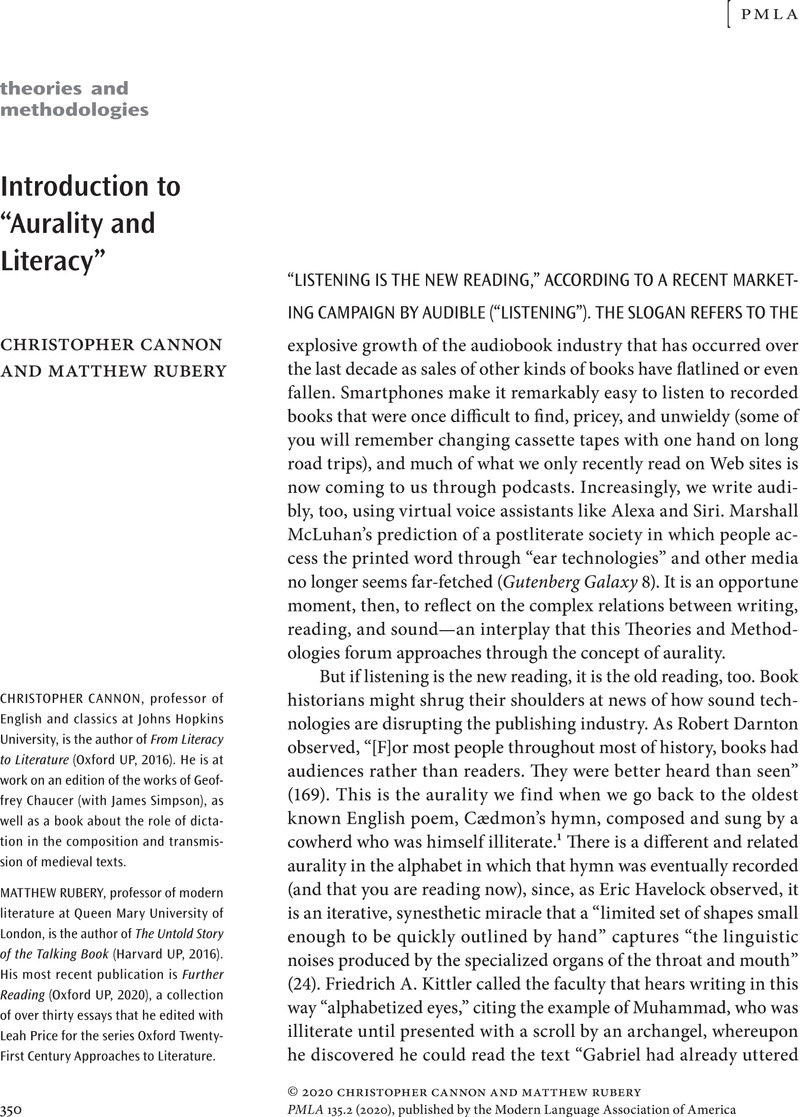Crossref Citations
This article has been cited by the following publications. This list is generated based on data provided by Crossref.
Magearu, Alexandra
2021.
Subaltern Aurality: Listening to Algerian Women’s Voices in Assia Djebar’s Fantasia: An Algerian Cavalcade.
Women's Studies,
Vol. 50,
Issue. 4,
p.
295.
Costabile‐Heming, Carol Anne
and
Halverson, Rachel J.
2023.
Reading literature in the Digital Age: Connecting students to texts orally and aurally.
Die Unterrichtspraxis/Teaching German,
Vol. 56,
Issue. 2,
p.
131.
Nadeau, Ashley
and
Craig, Jessica
2024.
Reading transformed: measuring the impact of audiobooks and transmedia learning in the Victorian literature classroom.
Nineteenth-Century Contexts,
p.
1.



